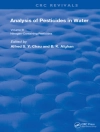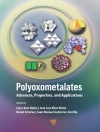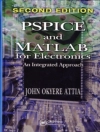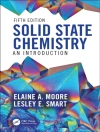Solid-State Metal Additive Manufacturing
Timely summary of state-of-the-art solid-state metal 3D printing technologies, focusing on fundamental processing science and industrial applications
Solid-State Metal Additive Manufacturing: Physics, Processes, Mechanical Properties, and Applications provides detailed and in-depth discussion on different solid-state metal additive manufacturing processes and applications, presenting associated methods, mechanisms and models, and unique benefits, as well as a detailed comparison to traditional fusion-based metal additive manufacturing.
The text begins with a high-level overview of solid-state metal additive manufacturing with an emphasis on its position within the metal additive manufacturing spectrum and its potential for meeting specific demands in the aerospace, automotive, and defense industries. Next, each of the four categories of solid-state additive technologies—cold spray additive manufacturing, additive friction stir deposition, ultrasonic additive manufacturing, and sintering-based processes—is discussed in depth, reviewing advances in processing science, metallurgical science, and innovative applications. Finally, the future directions of these solid-state processes, especially the material innovation and artificial intelligence aspects, are discussed.
Sample topics covered in Solid-State Metal Additive Manufacturing include:
- Physical processes and bonding mechanisms in impact-induced bonding and microstructures and microstructural evolution in cold sprayed materials
- Process fundamentals, dynamic microstructure evolution, and potential industrial applications of additive friction stir deposition
- Microstructural and mechanical characterization and industrial applications of ultrasonic additive manufacturing
- Principles of solid-state sintering, binder jetting-based metal printing, and sintering-based metal additive manufacturing methods for magnetic materials
- Critical issues inherent to melting and solidification, such as porosity, high residual stress, cast microstructure, anisotropic mechanical properties, and hot cracking
Solid-State Metal Additive Manufacturing is an essential reference on the subject for academic researchers in materials science, mechanical, and biomedicine, as well as professional engineers in various manufacturing industries, especially those involved in building new additive technologies.
Зміст
Preface xiii
Part I Introduction 1
1 Introduction and Overview 3
Hang Z. Yu, Nihan Tuncer, and Zhili Feng
1.1 Overview and History of Metal Additive Manufacturing 4
1.2 Liquid-State Bonding Versus Solid-State Bonding 7
1.2.1 Liquid-State Bonding 7
1.2.2 Solid-State Bonding 8
1.3 Nonbeam-Based, Solid-State Metal Additive Manufacturing 9
1.3.1 Deformation-Based Metal Additive Manufacturing 9
1.3.2 Sintering-Based Metal Additive Manufacturing 11
1.4 Additive Manufacturing Categorization Based on the Relationship Between Shape Forming and Consolidation 12
1.5 Organization of the Book 14
References 15
Part II Cold Spray Additive Manufacturing 19
2 Impact-Induced Bonding: Physical Processes and Bonding Mechanisms 21
David Veysset and Mostafa Hassani
2.1 Introduction 21
2.2 Fundamentals of Impact Bonding 23
2.2.1 Plate Impacts and Explosive Welding 23
2.2.1.1 The Shock Equations of State 23
2.2.1.2 Limiting Conditions for Explosive Welding 24
2.2.2 Laser Impact Bonding 30
2.3 Bonding Mechanisms in Cold Spray 32
2.3.1 Proposed Mechanisms 32
2.3.1.1 The Role of Jetting and Impact Pressure in Particle Bonding 32
2.3.1.2 The Limiting Case of Impact Melting 33
2.3.1.3 Adiabatic Shear Instability 36
2.3.1.4 Dissimilar Materials Impact 40
2.3.2 Influence of Particle Characteristics 41
2.3.2.1 Particle Temperature 41
2.3.2.2 Particle Size 42
2.3.2.3 Surface Oxide and Hydroxide Effects 42
References 43
3 Microstructures and Microstructural Evolution in Cold-Sprayed Materials 49
Luke N. Brewer and Lorena I. Perez-Andrade
3.1 Introduction 49
3.2 Defect Structures 50
3.2.1 Vacancies 51
3.2.2 Dislocation Structure 52
3.2.3 Grain Structure 55
3.2.4 Precipitate Structure 56
3.2.5 Porosity 60
3.3 Microstructural Evolution of Thermally Treated Cold-Sprayed Materials 61
3.3.1 Recovery, Recrystallization, and Grain Growth 62
3.3.2 Precipitation 65
3.3.3 Heat Treatment of Feedstock Powders and its Impact on Microstructure 66
3.4 Conclusions 67
Acknowledgements 67
References 68
4 Mechanical Properties of Cold Spray Deposits 75
Sara Bagherifard and Mario Guagliano
4.1 Introduction 75
4.2 Mechanical Properties 76
4.2.1 Adhesive Strength 77
4.2.1.1 Adhesive Strength Test Methods 77
4.2.1.2 The Effect of Process Parameters on Adhesive Strength 80
4.2.1.3 The effect of Pre-/Post-treatments on Adhesive Strength 80
4.2.2 Cohesive Strength 83
4.2.2.1 Cohesive Strength Test methods 84
4.2.2.2 Cohesive Strength Under Static Loading 84
4.2.2.3 Cohesive Strength Under Fatigue Loading 86
4.2.2.4 Anisotropy in Cohesive Strength 90
4.2.3 Summary and Future Perspectives 91
References 94
5 Cold Spray in Practical and Potential Applications 101
Jingjie Wei, Yong He, Phuong Vo, and Yu Zou
5.1 Introduction 101
5.1.1 The Cold Spray Process 101
5.1.2 Cold Spray Additive Manufacturing (CSAM) 103
5.2 Materials 103
5.2.1 Cu and Cu Alloys 103
5.2.1.1 2Cu–Ga and Cu–In–Ga 107
5.2.1.2 Cu–Sn 107
5.2.1.3 Cu–W 107
5.2.2 Al and Al Alloys 108
5.2.3 Ni and Ni Alloys 110
5.2.4 Stainless Steels 111
5.2.5 Body Center Cubic (BCC) Metals 112
5.2.5.1 Tantalum 112
5.2.5.2 Niobium 114
5.2.6 Hexagonal Close-Packed (HCP) Metals 114
5.2.6.1 Titanium 114
5.2.6.2 Magnesium 116
5.2.7 Metal Mixes and Metal Matrix Composite (MMC) 116
5.2.7.1 Metal Mixes 117
5.2.7.2 Metal Matrix Composite 117
5.2.8 Multicomponent and High Entropy Alloys 120
5.2.8.1 MCr Al Y Multicomponent Alloy 120
5.2.8.2 High Entropy Alloy (HEA) 120
5.2.9 Multimaterials 121
5.3 Perspective and Challenges 122
References 124
Part III Additive Friction Stir Deposition 133
6 Process Fundamentals of Additive Friction Stir Deposition 135
David Garcia and Hang Z. Yu
6.1 Additive Friction Stir Deposition – Macroscopic Process Overview 136
6.2 Thermo-Mechanical Processing Evolution 139
6.3 Heat Generation and Heat Transfer 142
6.3.1 Heat Generation and Heat Transfer Mechanisms 142
6.3.2 Peak Temperature and Material Dependence 143
6.4 Material Flow and Deformation 146
References 149
7 Dynamic Microstructure Evolution in Additive Friction Stir Deposition 153
Robert J. Griffiths and Hunter A. Rauch
7.1 Introduction to Microstructure Evolution in Additive Friction Stir Deposition 154
7.2 Dynamic Microstructure Evolution in Single-Phase Materials 155
7.2.1 Stacking Fault Energy and Dislocation Mobility 155
7.2.2 Dynamic Recovery 157
7.2.3 Continuous Dynamic Recrystallization 157
7.2.4 Discontinuous Dynamic Recrystallization 159
7.2.5 Static and Post-Dynamic Recrystallization 160
7.2.6 Heterogeneous Deposits and Metadynamic Recrystallization 161
7.3 Dynamic Microstructure Evolution in Multiple-Phase Materials 162
7.3.1 Thermal Evolution During Additive Friction Stir Deposition 162
7.3.2 Evolution of Secondary Phases at Low Temperature 164
7.3.3 Evolution of Secondary Phases at High Temperature 166
7.3.4 Evolution of Secondary Phases After Deformation 168
7.3.5 Mapping Secondary Phase Evolution to Processing Space 168
7.4 Effects of Material Transport on Microstructure Evolution 170
7.4.1 Mechanisms of Material Transport 170
7.4.2 Material Transport for the Homogenization of Mixtures 172
7.4.3 Densification of Material Through Material Transport 173
7.4.4 Material Transport and Spatial Variance in Thermomechanical Conditions 174
7.5 The Study of Microstructure Evolution in Additive Friction Stir Deposition 175
7.5.1 Contemporary Approaches 175
7.5.2 Novel Approaches 177
Acknowledgement 177
References 177
8 Mechanical Properties of Additive Friction Stir Deposits 181
Dustin Avery and Mackenzie Perry
8.1 Introduction 181
8.2 Magnesium-Based Alloys 184
8.2.1 WE43 184
8.2.2 AZ31 187
8.3 Aluminum-Based Alloys 189
8.3.1 5xxx 190
8.3.2 2xxx 192
8.3.3 6xxx 193
8.3.4 7xxx 195
8.3.5 Cast Al Alloys 197
8.4 Other Alloys Systems 197
8.4.1 Nickel-Based Alloys 197
8.4.2 Copper-Based Alloys 198
8.4.3 Titanium-Based Alloys 198
8.4.4 Steel Alloys 199
8.4.5 High-Entropy Alloys 199
8.4.6 Metal Matrix Composites 200
8.5 Repair 200
8.6 Summary and Future Perspectives 201
8.6.1 Anisotropy 201
8.6.2 Graphite Lubricant 202
8.6.3 Multimaterial or Designed Feedstock 202
8.6.4 Effect of Process Parameters on Mechanical Properties 202
8.6.5 Active Cooling/Heating 202
8.6.6 Heat Treatment 202
8.6.7 High-Temperature Materials – Tool Wear 203
8.6.8 Unique Possibilities 203
8.6.9 Modeling 203
References 203
9 Potential Industrial Applications of Additive Friction Stir Deposition 209
Hang Z. Yu, Rajiv S. Mishra, Chase D. Cox, and Zhili Feng
9.1 Large-Scale Metal Additive Manufacturing 209
9.2 Selective Area Cladding 211
9.3 Recycling and Upcycling 214
9.4 Structural Repair 220
9.5 Underwater Deposition 224
Acknowledgment 227
References 227
Part IV Ultrasonic Additive Manufacturing 231
10 Process Fundamentals of Ultrasonic Additive Manufacturing 233
Austin Ward
10.1 Process Overview 233
10.1.1 Process Parameters 234
10.2 Temperature Rise and Thermal Modeling 235
10.2.1 Heat Generation During Welding 235
10.2.2 Sonotrode Contact Stress 237
10.2.3 Coefficient of Friction 238
10.2.4 Temperature Profile 239
10.3 Feedstock Bonding Mechanisms 241
10.3.1 Oxide Breakdown 241
10.3.2 Asperity Deformation 243
10.3.3 Diffusional Bonding Processes 246
10.3.4 Liquid-Phase Bonding 247
10.4 Dissimilar Metal Consolidation 247
10.4.1 Mechanical and Thermal Modeling 247
10.4.2 Dissimilar Metal Junction Growth 248
10.4.3 Interdiffusion 249
10.5 Acoustic Softening and Strain Normality 251
10.5.1 Cyclic Strain Ratcheting 253
10.6 Summary 254
Acknowledgments 255
References 255
11 Ultrasonic Additive Manufacturing: Microstructural and Mechanical Characterization 259
Tianyang (Tyler) Han, Leon M. Headings, and Marcelo J. Dapino
11.1 Introduction 259
11.2 Microstructure Analysis of UAM Builds 259
11.2.1 Similar Material Joining with UAM 260
11.2.2 Dissimilar Material Joining with UAM 262
11.2.2.1 Al-Ceramic Weld 262
11.2.2.2 Ni-Steel Weld 263
11.3 Hardness Analysis of UAM Builds 266
11.4 Mechanical Characterization of UAM Builds 267
11.4.1 Design of a Custom Shear Testing Method 268
11.4.2 Validation of the Shear Test 268
11.4.3 Finite element Modeling of the Shear Test 270
11.4.4 Application of the Shear Test to UAM Samples 273
11.5 Conclusions 275
References 275
12 Industrial Applications of Ultrasonic Additive Manufacturing 279
Mark Norfolk
12.1 Early Years 279
12.2 Increased Power → Increased Capability 281
12.3 Modern Applications 282
12.3.1 Electrification 282
12.3.2 Thermal Management 286
12.3.3 Embedded Electronics 288
12.3.3.1 Smart Plate 290
12.3.3.2 Sense Pipe 291
12.4 Future Applications 292
References 292
Part V Sintering-Based Processes 295
13 Principles of Solid-State Sintering 297
Basil J. Paudel, Albert C. To, and Amir Mostafaei
13.1 Introduction 297
13.2 Basic Terminology 298
13.2.1 Sintering 298
13.2.2 Relative Density/Green Density 299
13.2.3 Coordination Number 299
13.2.4 Surface Tension/Surface Energy 300
13.2.5 Wetting Angle/Dihedral Angle 300
13.2.6 Neck Growth/Shrinkage/Densification 301
13.3 Sintering Stress 302
13.3.1 Two Particle Model 302
13.3.1.1 Case I: Without Shrinkage 303
13.3.1.2 Case II: With Shrinkage 303
13.3.2 Driving Force 303
13.3.3 Interfacial Activity/Thermodynamics 304
13.4 Mass Transport Mechanisms 306
13.4.1 Grain Boundary Diffusion 306
13.4.2 Lattice/Volume Diffusion 306
13.4.3 Viscous Flow 306
13.4.4 Surface Diffusion 307
13.4.5 Evaporation/Condensation 307
13.4.6 Gas Diffusion 307
13.5 Sintering Stages 307
13.6 Sintering Simulation 308
13.7 Concluding Remarks, Challenges, and Future Works 309
References 310
14 Material Extrusion Additive Manufacturing 313
Alexander C. Barbati and Aaron Preston
14.1 Introduction 313
14.2 Hierarchy of MEAM Parts and Feedstock Behavior 316
14.3 Feedstock Attributes 325
14.4 Extrusion Control 327
14.5 Toolpathing: Strength and Quality 331
14.6 Conclusions 335
Acknowledgments 336
References 336
15 Binder Jetting-based Metal Printing 339
Marco Mariani, Nora Lecis, and Amir Mostafaei
15.1 Introduction to Binder Jetting 339
15.2 Printing Phase 341
15.2.1 Particulate Feedstock 341
15.2.1.1 Feedstock Materials 342
15.2.1.2 Feedstock Morphology and Size Distribution 343
15.2.2 Binder Selection 344
15.2.3 Powder Spreading and Binder Deposition System Configurations 345
15.3 Thermal Treatments 346
15.3.1 Curing 346
15.3.2 Debinding 347
15.3.3 Sintering 348
15.3.4 Additional Treatments 349
15.4 Future Developments 350
15.5 Conclusion 352
References 352
16 Sintering-based Metal Additive Manufacturing Methods for Magnetic Materials 361
H. Wang, A. M. Elliot, and M. P. Paranthaman
16.1 Introduction 361
16.2 Background 362
16.3 Additive Manufacturing Methods 369
16.4 Applications 372
16.5 Summary 374
Acknowledgments 375
References 375
17 Future Perspectives 379
Hang Z. Yu, Nihan Tuncer, and Zhili Feng
17.1 Enhancing the Understanding of Process Fundamentals 379
17.2 Expanding the Printable Material Library 381
17.3 Embracing Artificial Intelligence for Quality Control and Process Prediction 381
References 383
Index 385
Про автора
Hang Z. Yu, Ph D, is an Associate Professor in the Department of Materials Science and Engineering at Virginia Tech, USA. His research focuses on materials processing and manufacturing science, emphasizing the underlying process physics, mechanics, and kinetics. His work also aims to leverage the process fundamentals to drive material sustainability to new heights, e.g., via solid-state metal recycling, structural repair, and austere condition-resilient manufacturing.
Nihan Tuncer, Ph D, is a Principal Scientist at Desktop Metal Inc. since 2016, where she has been developing solid-state 3D printing technologies and equipment. She holds several patents in addition to research papers and review articles. Her expertise includes powder metallurgy, processing-microstructure-property relationships in ferrous and non-ferrous alloys, porous metals, and shape memory alloys.
Zhili Feng, Ph D, currently leads the Materials Joining Group and is a Distinguished R&D Staff Member of Oak Ridge National Laboratory, USA. His research covers various aspects of thermal-mechanical-metallurgical behaviors of materials in materials joining.












